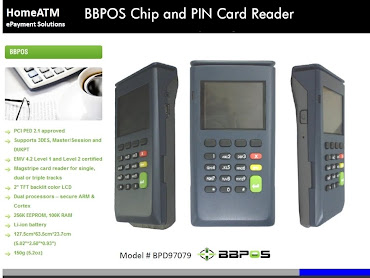“PIN Crackers” and Data Security
Really excellent article by Kim Zetter on the Wired Threat Level site in regards to "PIN cracking", and some of the techniques being employed to gather large amounts of consumer financial data. I know Rich referenced this post earlier today, but since I already wrote about it and have a few other points I think should be mentioned, hopefully you will not mind the duplicated reference.
Before I delve into some of the technical points, I want to say that I am not certain if the author desired a little sensationalism to raise interest, or if the security practitioners interviewed were not 100% straight with the author, or if there was an attempt to disguise deployment mistakes by hyping the skills of the attacker, but the headline and some of the contents are misleading. The attackers are not 'cracking' the ATM PINs, as the encryption is not what is being attacked here. Rather they are 'scraping' the memory of the security devices, looking for unencrypted data or the encryption keys. In this case by grabbing the data when it is unencrypted and vulnerable (in a cryptographic sense if not the physical one) within the Hardware Security Device/Module/Unit for electronic funds transfers, hackers are in essence sniffing unencrypted data.
The attack is not that sophisticated, nor is it new, as various eavesdropping methods have been employed for years, but that does not mean that it is easy. Common tactics include altering the device's operating system or 'attaching' to the hardware bus to access keys and passwords stored in memory, thus bypassing intended interfaces and protections. Some devices of this type are even constructed in such a way that physical tampering will destroy the machine and make it apparent someone was attempting to monitor information. Some use obfuscation and memory management technologies to thwart these attacks. Any of these requires a great deal of study and most likely trial and error to perfect. Unless of course you leave the HSM interface wide open, and your devices were infected with malware, and hackers had plenty of time to scan memory locations to find what they wanted.I am going to maintain my statement that, until proven otherwise, this is exactly what was going on with the Heartland breach. For the attack to have compromised as many accounts as they did without penetrating the Heartland facility would require this kind of compromise. It implies that the attackers have access to the HSM, most likely exploiting negligent security of the command and control interface, and infecting the OS with malicious code. Breaking into the hardware or breaking the crypto would have been a huge undertaking, requiring specialized skills and access.
Part of the reason for the security speed-bump post was to illustrate that any type of security measure should be considered a hindrance; with enough time, skill and access, the security measure can be broken. Enough hindrances in place can provide good security. Way back when in my security career, we used to perform hindrance surveys of our systems to propose how we might break our own systems, under what circumstances this could be done, and what skills and tools would be required. Breaking into an HSM and scraping memory is a separate and distinct skill from cracking encryption (keys), and different from writing SQL and malware injection code. Each attack has a cost in time and skill required. If you had to employ all of them, it would be very difficult for a team of people to accomplish. Some of the breaches, both public as well as undisclosed breaches I am aware of, have involved exploitation of sloppy deployments, as well as the other basic exploitation techniques. While I agree with Rich's point that our financial systems are under a coordinated multi-faceted attack, the attackers had unwitting help.
Criminals are only slightly less lazy than system administrators. Security people like to talk about thinking like a criminal as a precursor to understanding security, and we pay a lot of lip service to it, but it is really true. We are getting to watch as hackers work through the options, from least difficult to more difficult, over time. Guessing passwords, phishing, and sniffing unencrypted networks are long since pase, but few are actively attacking the crypto systems as they are usually the strongest link in the chain. I know it sounds really obvious to say that attackers are looking at easy targets, but that is too simplistic. Take a few minutes to think about the problem: if your boss paid you to break into a company's systems, how would you go about it? How would you do it without being detected? When you actually try to do it, the reality of the situation becomes apparent, and you avoid things that are really freakin' hard and find one or two easy things instead. You avoid things that are easily detectable and being watched. You learn how to leverage what you're given and figure out what you can get, given your capabilities. When you go through this exercise, you start to see the natural progression of what an attacker would do, and you often see trends which indicate what an attacker will try and why.
Despite the hype, it's a really good article and worth your time.
—Adrian









0 comments